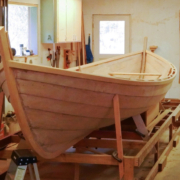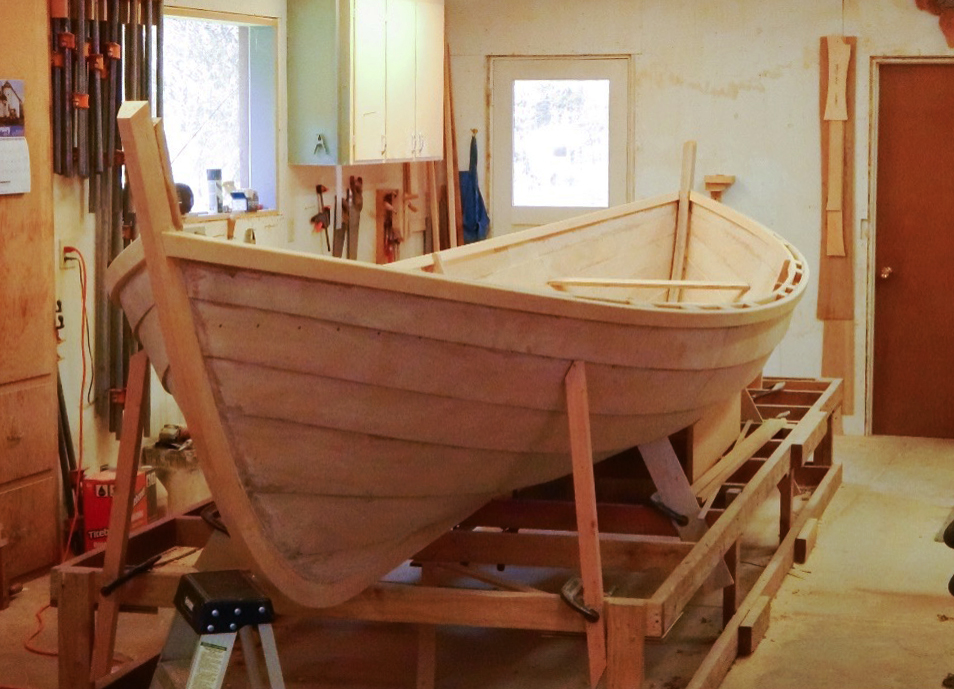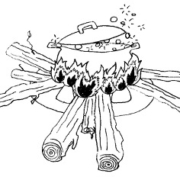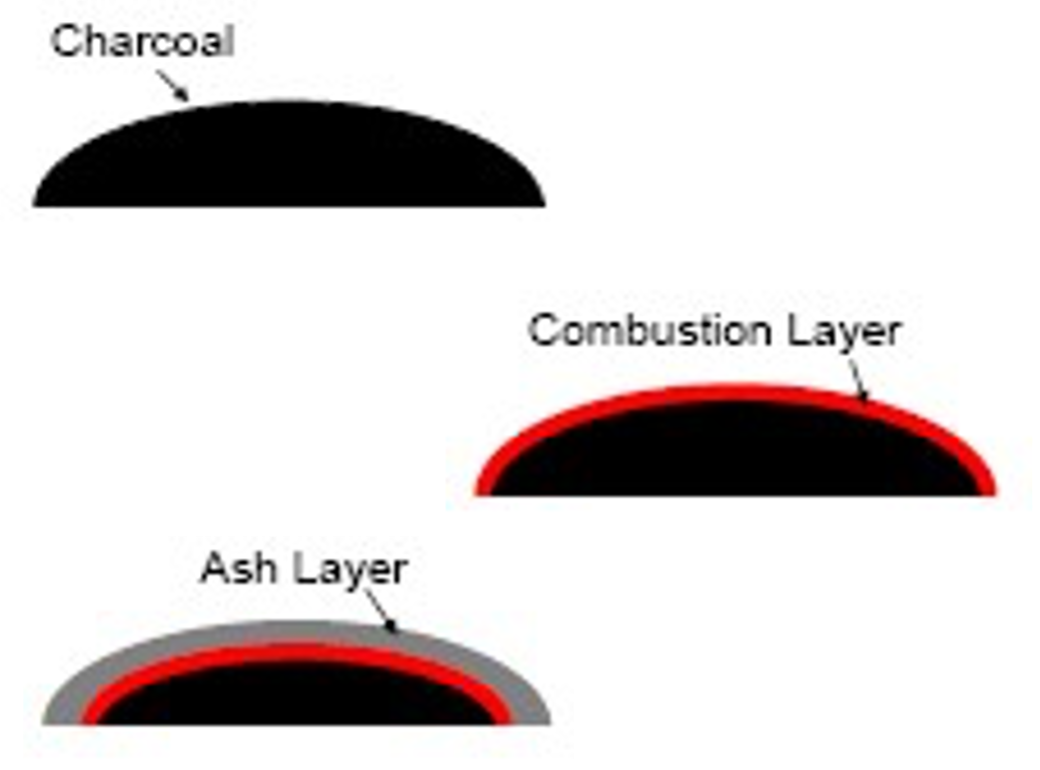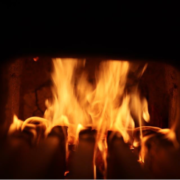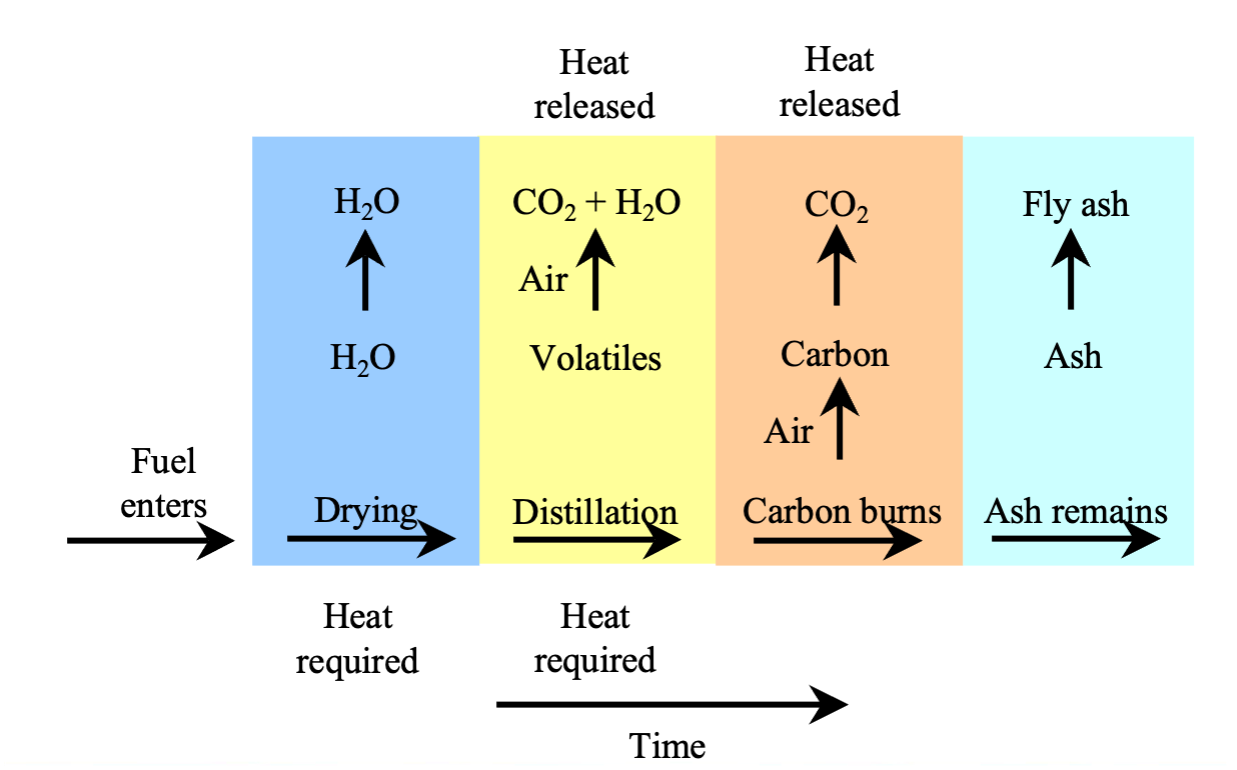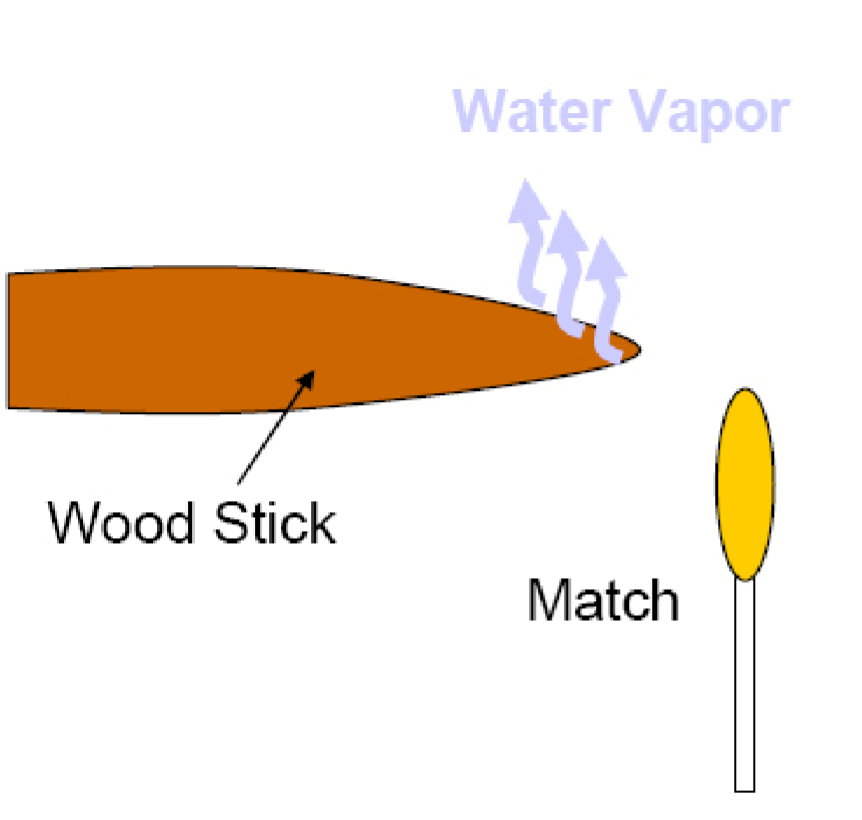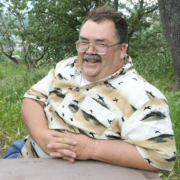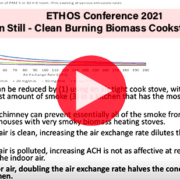In our Nov. 24 newsletter, we shared a basic description of how wood burns from Samuel Baldwin’s book “Biomass Stoves: Engineering Design, Development, and Dissemination” (1987). Here are more details about the process from the same book:
“The temperature of the hot gas above the wood is typically around 1100ºC and is limited by radiant heat loss and by mixing with cold ambient air. As the volatiles rise they react with other volatile molecules forming soot and smoke and simultaneously burning as they mix with oxygen. Some 213 different compounds have so far been identified among these volatiles. If a cold object, such as a pot is placed close to the fire, it will cool and stop the combustion of some of these volatiles, leaving a thick black smoke.”
“Overall, these burning volatiles account for about two-thirds of the energy released by a wood fire. The burning charcoal left behind accounts for the remaining third. Because the volatiles are released as long as the wood is hot, closing off the air supply stops combustion alone. The heat output of the fire is then reduced but the wood continues to be consumed for as long as it is hot, releasing unburned volatiles as smoke and leaving charcoal behind.”
“As the topmost layers gradually lose all their volatiles only a porous char is left behind. This hot char helps catalyze the breakdown of escaping volatile gases, producing lighter, more completely reacting gases to feed the flames. In some cases, the volatiles cannot easily escape through this char layer. As they expand and force their way out, they cause the burning wood to crack and hiss or spit burning embers.”
“The char layer also has a lower thermal conductivity than wood. This slows conduction of heat to the interior and thus slows the release of volatiles to feed the flames.”
“At the surface of the char, carbon dioxide reacts with the char’s carbon to produce carbon monoxide. Slightly further away (fractions of a millimeter) the greater oxygen concentration completes the combustion process by reacting with the carbon monoxide to produce carbon dioxide. The temperature near the surface of the burning charcoal surface is typically about 800ºC. The endothermic (heat absorbing) dissociation of carbon dioxide to carbon monoxide and oxygen, and radiant heat loss, limit higher temperatures.”
“When all the carbon has burned off only mineral salts remain as ash. This ash limits the flow of oxygen to the interior and so limits the combustion rate. This is an important mechanism controlling the combustion rate in charcoal stoves.”
“The entire process uses about 5 m³ of air (at 20ºC and sea level pressure) to completely burn 1 kg of wood. To completely burn 1 kg of charcoal requires about 9 m³ of air. Thus, a wood fire burning at a power level of 1 kw burns 0.0556 grams of air per second. Additional excess air is always present in open stoves and is important to insure that the combustion process is relatively complete.”





